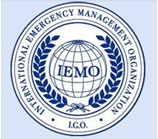
EMERGENCY PREVENTION
According to the Definition provided by the United Nations International Strategy for Disaster Reduction (UN/ISDR)¹ , the term Prevention indicates: "Actions to provide outright avoidance of the adverse impacts of hazards and means to minimize related environmental, technological and biological disasters. Depending on social and technical feasibility and cost –benefit considerations, investing in preventive measures is justified in areas frequently affected by disasters. In the context of public awareness and education related to disaster risk reduction, changing attitudes and behaviour contribute to promoting a “culture of prevention"
The International Emergency Management Organization has provided a subsidiary definition for the concept of Emergency Prevention, derived from the aforesaid provided by the United Nations International Strategy for Disaster Reduction and indicates : the ensemble of the measures deemed to avoid the occurrence of an emergency or of its adverse effects on the human system and/or the environment.
The avoidance can take place by eliminating the causation factors of a given emergency, by strongly delay its occurrence, or by eliminating its adverse effects on the humane system and/or the environment
The first case (elimination of the causation factors) or "integral prevention" can rarely occur for pure natural disasters but it can become essential in case of natural disasters directly caused or linked to human activity ( Global Warming, Deforestation, Pollution, etc.)
The second case (delay in time) is called "temporal prevention" and is typical of man-made emergencies, especially of sociological, political or economical nature. An emergency is kept away form occurrence until it becomes un-harmful or, in other case, a series of measures are taken between the revealing of the emergency causative factors and their actual manifestation on the humane system and/or the environment, this period of time being called :"emergency Δ (delta)"
The third case ( avoidance or reduction of adverse effects ) is called "effect protection"
Effect Protection can be applied both for natural and man-made disasters, as well as for complex emergencies ( i.e: anti-seismic constructions). It is directly linked with the concept of "preparedness" an implies the use of specific tactics to reduce the vulnerability of a give social or ecological system through the increase of systemic resilience as the diffusion of a "culture of prevention" or through specific ad hoc measures to spare emergency adverse effects.
___________________________________________________
¹UN/ISDR: Disaster Preparedness for Effective Response, United Nations Office for Coordination of Humanitarian Affairs, 2008











